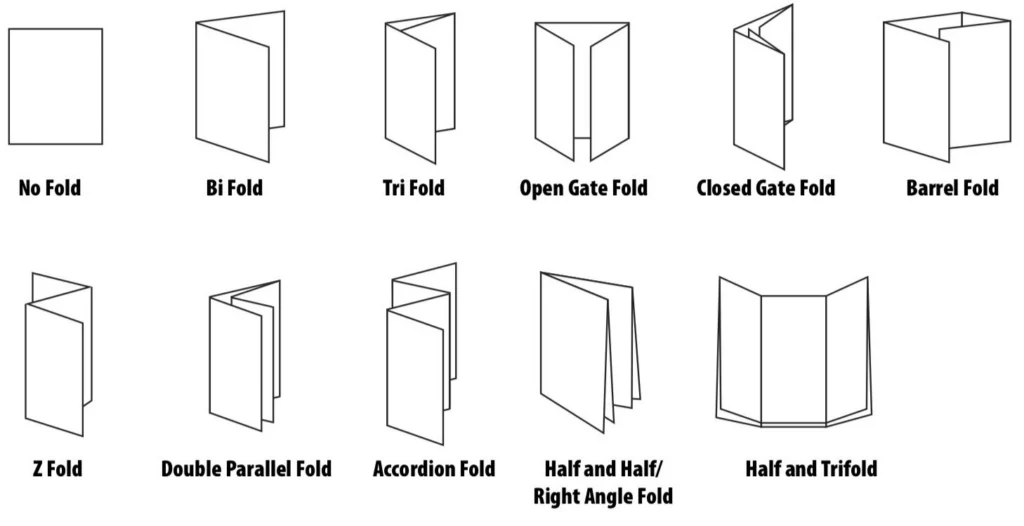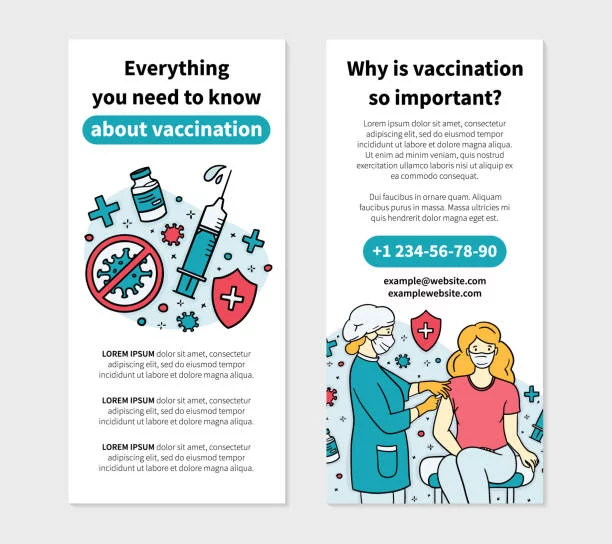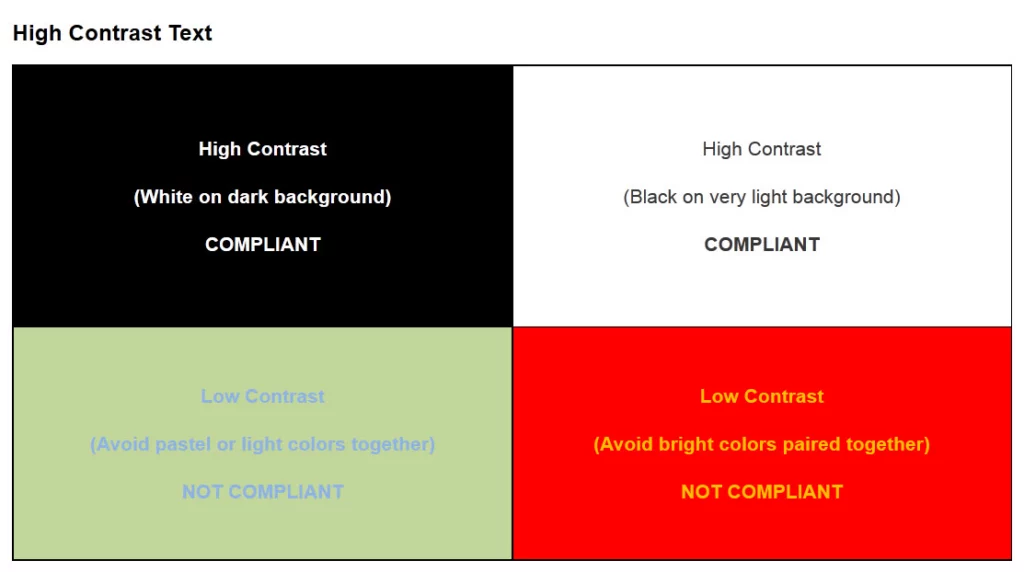Despite the prominence of digital marketing, print collateral still has an important role to play in a balanced marketing strategy. A professionally produced brochure suggests a high budget and an established reputation.
Related: How to make a stunning travel brochure
Not only that, but brochures are versatile marketing tools. You can distribute them at trade shows, put them in brochure racks, send them via direct mail, and even publish them on your company website.
(They’re also very portable. Many people would prefer to grab a brochure and read it at their convenience rather than engage with a salesperson.)
Most brochures are just a few hundred words in length, so you don’t have a lot of space to get your message across. It’s important to make every word count. Here are eight tips for writing a brochure that signals professionalism and competence — and spurs your readers to action.
1. ) Create an outline or plan of attack
Brochures vary in content and length, but most follow a standard format.
- The front panel displays the company logo and headline.
- The inner panels make a case for the product/service using supporting facts and details.
- The final panel contains contact info and a call-to-action.
Please note: At the end of this post, we’ve included a cheat sheet of content types you can put in your inner panels.
Before you start writing, identify your target persona for the brochure including age, gender, location, role, income, interests and challenges.
This information will guide the tone, language and content of your brochure. It’ll also help you choose a call-to-action that appeals to your readers. For instance, an offer for a free white paper would likely be of interest to an executive, whereas a mobile app download would be more fitting for a college student.
Make note of where your target audience is in the buying cycle. Don’t waste space going on about the history of your organization if your readers have done business with you before.
Also consider the level of understanding your prospects already have about the topic. Are they experts, novices or somewhere in between? Keeping this in mind will help you avoid alienating readers by talking down to them or confusing them.
2.) Write a compelling headline
Your headline will determine whether a prospect picks up and reads your brochure or tosses it aside.
Avoid using headlines that don’t tell the reader anything about the contents of the brochure — for example, “Make a Good Impression.” What does this mean, who are you making a good impression on? And for what purpose?
You can provoke a reader’s curiosity without being vague. These example headlines spark interest while also telling readers exactly what they’ll get from reading the brochure:
- Scared of the Dentist? Learn How Sedation Dentistry Can Help
- The Ultimate College Prep Checklist: A Four-Year Plan for High School Freshmen
- 4 Reasons to Think Again Before Buying a Foreclosed Home
Don’t be afraid to use “power” words like free, quick, easy, results, exclusive, proven, etc. What they lack in originality, they make up for ineffectiveness.
3.) Be concise and use plain language
Your brochure should focus on one product or service. A trifold brochure only has space for about 350-450 words, so keep words, sentences and paragraphs short. Edit ruthlessly and include only the most relevant information, leaving room for white space and images.
Big walls of unbroken text look intimidating to readers, so use subheads liberally. Try not to put more than a couple of paragraphs in a row without introducing something else to break up the monotony, such as a subhead, bullet-point list or image.
With the help of Lucidpress’s online drag-and-drop editor, you can quickly design a professional-looking brochure with elements like callouts, pull quotes and tables.
4.) Limit the copy to 1-2 typefaces
The typefaces you choose should be easy to read and consistent with your branding. Often, if the subhead copy is in a serif face, the body copy will use a sans-serif face, and vice versa. There are some great free tools available to help you select a complementary font pairing.
Select font size, spacing and color with readability in mind so your prospects don’t have to work to read the brochure.
5.) Give readers a reason to keep your brochure
If you can, include a handy reference of some kind in your brochure to dissuade readers from throwing it away—for example:
- a map of a town marked with top attractions
- a “normal body weight” chart based on the reader’s height
- a list of program-specific student scholarships
- a cheat sheet for first-time homebuyers in a specific city
Also, consider printing the brochure on a high-quality glossy paper to boost its perceived value.
6. Include next steps or a call-to-action
The goal of your sales brochure should be to persuade your readers to take a specific action.
This call-to-action is usually placed on the last panel of the brochure, along with the contact info. To boost response rates, offer an incentive, such as a promo code or free product.
The following are some example actions you might want your readers to take:
- Sign up to your email list for a free white paper
- Visit your website to make a purchase or sign up for a program
- Call to book a free consultation
- Scan a QR code to download an app
- Enter for a chance to win
- Visit your store for an upcoming sale
7.) Proofread your brochure
No matter how much effort you put into your messaging and design, errors and inconsistencies in your printed literature can kill your credibility.
Verify that the tone of your brochure matches the rest of your brand messaging. Unlike informational brochures (which may take the third-person point-of-view), sales brochures usually use the second-person to build rapport with the reader.
Refer to your brand style guide for how to handle things like numerals, dates and titles in the text. If you don’t have a brand style guide, use an established style reference like AP Stylebook. And of course, look everything over for correct spelling, punctuation and grammar.
8.) Double-check for important details
Before the brochure goes to print, check that your logo and contact information are present and error-free. Also look for details you may have forgotten to include, such as:
- Purchasing info—how to place an order, accepted payment types, guarantees, warranties, refunds, shipping, etc.
- Visitor info—accessibility for people with disabilities, hours of operation, seasonal times, admission rates, group sizes, pets, directions, etc.
- Legal info—copyrights, trademarks, registration marks, disclaimers, etc.
You can also create branded templates for your brochures so you don’t miss anything important when you start a new project — Lucidpress handles printing as well.
Bonus: What should I put in my brochure?
For inspiration, here’s a cheat sheet of content types often found in sales brochures:
- Descriptions of products, services, exhibits or attractions
- Features and benefits
- Product specs
- Pricing charts
- Pros and cons
- Itinerary (e.g. winery tours)
- Narrative (e.g. history of a winery)
- How a product works
- How a service is delivered
- How to do something
- Checklists and questionnaires
- Images, illustrations, charts, graphs and maps
- Frequently asked questions
- Company blurb
- Social proof: case studies, testimonials or media quotes, client list, executive bios, etc.
Experiment with a few of these items and see where it takes you. You might be surprised at how quickly you run out of space!
What are you waiting for? Try your hand at design with any of our design templates.
Patient engagement is touted in both healthcare marketing plans and clinical settings as a strategy to produce better health outcomes and, ultimately, a better patient experience. But a close inspection of the intersection of marketing strategies and patient engagement shows that in many healthcare settings, the effort to become patient-centric has not produced effective patient engagement.
Let’s take a closer look at what patient engagement means, why it matters, and how to create patient engagement strategies that connect to better outcomes, reduced costs, and more fulfilling experiences for both patients and clinicians.
What is patient engagement?
Patient engagement is defined as a patient actively engaged in their own healthcare decision-making. At its best, patient engagement is a partnership between patients and clinicians in which they share information, foster healthy behaviors, and craft treatment plans to manage conditions and produce desired health outcomes.
Patient engagement should not be confused with patient satisfaction. While engaging patients in their own care may lead to better satisfaction with the patient experience, the two terms are not interchangeable.
Why patient engagement strategies in healthcare matter
Studies have consistently shown that patients who are actively engaged in the management of their own care and treatment plans achieve better health outcomes. Patients benefit from responsive providers who are willing to engage in the kinds of ongoing dialogues that foster trust and transparency in the healthcare decision-making process.
This kind of relationship-building and communication can be hard to come by in clinical settings for a variety of reasons. In a 2017 survey, 555 healthcare leaders and clinicians cited an inability of the healthcare team to invest time as the largest obstacle to integrating patient engagement strategies into care delivery plans.
5 tips for fostering patient engagement in healthcare
Helping patients become more involved in their own care reaps benefits for everyone involved, including healthcare professionals. Here are five ways to foster patient engagement throughout the patient journey.
Educate patients for better health outcomes
Educating patients can take many forms and extend far beyond the traditional pamphlets providers send home after a visit to the clinic. Consider expanding patient education initiatives to include more detailed information about prescriptions and dosages, newsletters on healthy habits, and reminders regarding overdue preventative screenings and tests. Studies have also shown that accessible communication is the key to successful engagement, so avoid medical jargon in patient educational materials.
Invest in the relationship between clinicians and patients
A 2019 study found that other than a scheduled visit, 70% of respondents had not heard from their primary care provider in the last two years. It’s difficult to build a relationship or foster trust without communication, and healthcare settings are no exception. Clinicians need to be aware that patients may hesitate to reach out for fear of seeming troublesome or difficult, so checking in periodically can reassure patients and help concerns surface.
Better patient engagement is about empowering the patient experience
It can be easy to get patient engagement and the patient experience confused. In fact, the two are closely related. Empowering patients to make their own decisions throughout the healthcare journey can have a profound impact on the patient experience. Every step in the journey, from making an appointment to following up on aftercare, is a chance for a clinician and the rest of the healthcare team to provide the best possible resources and encourage patients. After all, every patient is a critical stakeholder invested in their own health outcomes. As stakeholders, patients should be kept fully informed about their healthcare “investment” and given every chance to help it be successful.
Personalize healthcare experiences with custom content
Encouraging patient engagement can come off as formulaic. Often patients may just take that aftercare or at-home treatment pamphlet they’ve seen five times before and toss it in the trash. That’s why healthcare marketing materials and patient education digital assets need to focus on effective, customizable content. Forms that can be personalized to include notes from the appointment, information about integrating treatment into a busy lifestyle, or advice about overlapping conditions create personalized content that won’t end up in the dustbin.
Use technology and telehealth tools to drive patient engagement
Patients and providers have more tools than ever to connect and communicate. Electronic health records, telehealth tools, and patient billing portals allow patients to coordinate their own care. By encouraging patients to leverage the online tools and technology at their disposal, health professionals can foster greater levels of engagement. Multiple studies confirm the ability to coordinate treatment between healthcare teams remotely and the use of telemedicine tools to monitor outcomes can have far-reaching benefits for both patients and clinicians.
A pamphlet is a small, unbound booklet focused on a single subject, often educational in nature.
Pamphlets vs. brochures
While they might seem similar in size and layout, pamphlets and brochures are not the same thing. While brochures are used to advertise something (like a brand or an event) pamphlets are made to inform, not sell. Most often, pamphlets are distributed as educational tools.

For certain organizations, like nonprofits or community-based groups, pamphlets can be a valuable way to spread information and awareness on various issues. In industries like healthcare, pamphlets can also be a cost-effective way to educate people on things like medical procedures, different illnesses, and mental health.
How to make a pamphlet in 5 steps
Think a pamphlet would be a good tool for your organization or group? Making one is pretty simple, so let’s dive right in.
The process of creating a pamphlet is very similar to making a brochure. The key difference is intention. Instead of putting emphasis on making a sale, put your emphasis on providing valuable and accurate information about a subject.
First up: deciding on what size to make your pamphlet.
1. Consider your layout/size.
Before you can start designing, decide how big or small you want your pamphlet to be, and how it should be folded.
There are tons of different fold options to choose from – just remember that you don’t want your pamphlet to be too complicated to open and read.

2. Write compelling but understandable copy.
Pamphlets don’t offer a lot of space, so each sentence should be purposeful and valuable. Use simple language that’s easy to read and easy to understand. According to The Literacy Project, the average American reads at a 7th-8th grade reading level, so try to keep your messaging around that area. There are lots of free tools to test the reading level of your copy, like this calculator here.
3. Provide visual interest.
Illustrate your pamphlet with helpful visual elements—like photos, tables and charts—that make it more interesting to the reader.

4. Choose your colors.
Color is closely tied to emotion. Using colors wisely in your pamphlet will help communicate your message on a deeper level.
Additionally, double-check the accessibility of your colors. For example, high contrast designs (i.e. dark fonts on a light background) are much easier to see and read.

5. Test-run the print version.
Before you print and order hundreds of copies, test-run it first. Verify that the finished product meets your expectations.Ready to design your own professional pamphlet online? Marq makes it easy. With our intuitive drag-and-drop interface, you can select a template and customize it with fonts, colors, shapes, images and more. It only takes minutes to create a high-quality pamphlet that you’ll be proud to print and share.